In May of this year, in a small Oklahoma town, a seventeen year old young woman named Natalie was killed by a driver while sitting at a stop sign in broad daylight. This tragedy, senseless and cruel, devastated her family, especially her sister Cait. Cait and her husband Ben were preparing to move to Kansas City from Virginia so that Cait could go to med school, so despite still reeling from the pain of losing her sister, and losing her so young, they packed up and moved out here in June.
Moving halfway across the country, settling in, finding work, preparing for the long hours and rigorous studying of med school; these are all things that are stressful in any situation. But Cait was now away from any real support system besides Ben, even though her family was technically closer to her here than in Virginia. The first couple of months were hectic, stressful, and a little demoralizing.
A puppy, they thought. They began talking about getting a dog that would help Cait cope with the situation. Next summer, they said. By then Cait would be out of school for the summer and there’d be much more time to housebreak and work with a new pup. Beyond that, their financial situation would be a lot more stable.
Three weeks into school, though, after a particularly grueling and stressful few days, Cait came to Ben on a Sunday night and said, well, maybe we can adopt an older dog sooner rather than later. Maybe some kind of lab/pit mix. Something that would help stabilize her emotionally while she was still working through her still very fresh grief. Waiting for these feelings to subside was as interminable as watching paint dry on a living room wall, except you weren’t waiting to just put some furniture back in its place; you were waiting for your life to go on. It was never going to happen, was it?
The very next morning, and there’s video footage of this from their apartment building, someone drove up, dumped two dogs, and drove off.
KNOCK KNOCK
One of the dogs took off into the neighborhood, never to be seen again. The other, a more trusting sort, followed a resident back to the building, where the building manager, Gia, put her in a safe, gated area inside the complex.
Ben’s start date for his new job got pushed back, otherwise he wouldn’t have been there, wouldn’t have come downstairs to talk to Gia about something, and learned about this dog.
Ben went to go see this pup. She walked right up to him, went up on two legs, and gave him a hug. He looked at her, this medium-sized brown dog that looked to be… a lab/pit mix?
Okay, Ben thought. I’ve gotta text Cait.
When Cait was able to swing back by the apartment, she finally got to meet this dog that had shown up out of nowhere. It was clear that she needed a good home, that she was sweet and kind and quiet. They decided right away: we’re taking her in. They named her Penny.
So now Ben and Cait were first-time dog owners. They’d lived with dogs, just hadn’t had one of their own. And they were in an unfamiliar city with very limited resources; med school isn’t cheap, and Ben still hadn’t started his new job yet.
Then Cait remembered a faculty member at her school mentioned that they volunteer for PRCKC during her orientation. They decided to bring her to us next morning.
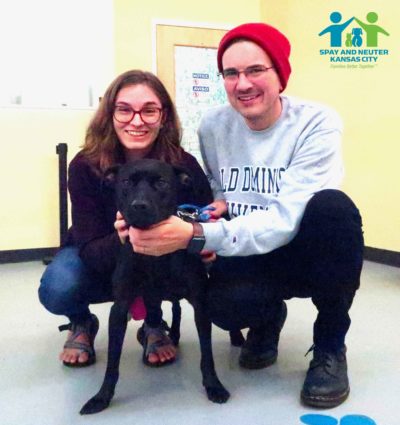
THE EASY PART
I first saw Ben, Cait, and Penny during a typically hectic surgery check-in, bright and early. Alica, our vet clinic supervisor, was talking to them. Not an unusual situation; sometimes people have questions, or we discover an underlying health issue during check-in and want to talk to the client about it. But as I walked past, I heard pieces of the story, and realized this was something very different.
Alica scanned for a microchip. Nothing. She looked for a spay scar. Success! So at least that was okay; they wouldn’t have to worry about getting her fixed.
And that was a concern, because money was still incredibly tight. They weren’t even sure if they were going to be able to make this work financially, because they were sure she’d need vaccinations, and they wanted her to be microchipped as well. But when I talked with them, it was clear they needed to make it happen. Penny was special.
“I’m not,” said Cait, “the kind of person who really believes in coincidences. I’m just not really like that. But… I can’t help but think my sister sent me this dog.” This felt right. You could tell just by looking at the three of them together.
So we offered them assistance. They were so grateful and kind. Ben told me, “This will obviously be a pay it forward situation. You guys are doing so much for us.” They said it was nice to find an organization in a new town that was doing this kind of work.
All the while, Penny just stood quietly. If she saw another dog (of which there were many), she would stand stock still and stare. No barks, no running, no chaos. Just watching.
THE HARD PART
Cait had to get to class, so they left, and Ben came back after 9, when our Wellness Care Clinic was open. We set them up with core vaccinations, a heartworm test, and a microchip. Everything she’d need to safe and happy in her new home.
We all had the sense of a job well done. We’d helped support this new family, and now Penny would settle in to her new home, Cait would have a dog for emotional support, and they could start to build a life here.
Unfortunately, there was a big wrinkle in that plan.
Penny tested positive for heartworms. And the test only returns a positive result when they’re adult female worms, which meant that she’d had them for a few months at least while they grew into adulthood. Penny was thin, but didn’t have the swollen belly that comes from extra fluid retention in the abdomen, a common sign of advanced heartworm infection. From the outside, she looked just fine. Which is of course what makes heartworms so deadly.
Was that why she’d been dumped? I mulled it over. Had someone dumped both dogs because they were heartworm positive? Or were they just someone who dumped their dogs and never had them on prevention, and never knew that they were heartworm positive? Neither situation is one we’re very thrilled about as an organization, but heartworm treatment is expensive. Maybe the idea of having to spend thousands of dollars treating two dogs for heartworms was too much. Maybe they felt desperate. Maybe they’re ashamed of what they did. Maybe they didn’t know we existed. Unfortunately, we’ll never know, just like we’ll never know what became of the other dog. Unanswered questions like this are a part of animal rescue; the ambiguity of it can be maddening. Your instinct is to say, we will save everyone, and every day we are faced with the reality that it simply isn’t possible, and you go home with the feeling that you haven’t done enough. Could we have helped them? In the end, it no longer matters, except in the way that we continue to move forward: with our eyes wide open and our arms outstretched to those in need.
And Penny was one of those in need. And Cait. And Ben. And this situation was right here, right now. We talked with Ben for a while about what heartworms were and what it meant, what the risks were for treatment.
As a part of a grant from Bayer, we had funding to treat a certain number heartworm-positive dogs. We’ve been pushing hard this year to get everybody’s pets on prevention, because heartworm is on the rise across the country. So we talked to him about this financial assistance program: we would be able to cover the cost of treatment through the grant. Ben sat and looked at the application for assistance, his brow furrowed. You could see him turning everything over in his head. No wavering; I never sensed that from him at all. More of a steeling of resolve, assessing and understanding. It was mind-boggling to think that they didn’t even know this dog existed just 24 hours before.
We got them approved for assistance, and sent them on their way to another clinic to work out the treatment timeline. I promised to check in with them soon to see how things were going. All the while, Penny sat and watched everybody, friendly and sweet. Even though it’d been a chaotic 24 hours for her too, more so even than her new family, she made sure to give hugs to people who came over to say hi to her.
EYES OPEN, ARMS OUTSTRETCHED
I went to see them a couple of weeks ago at their apartment building. Penny looked great. She was on antibiotics to prep her for her first heartworm treatment. First thing she did, of course, was come up to me and give me a hug. This is now standard Penny procedure.
Penny’s fitting in really well. She has a few weird quirks; she got a little obsessed with a string of lights when the wind made it move. She gets fixated on her shadow, which Ben was worried about (it can be a precursor to obsessive-compulsive disorder in dogs), but she isn’t barking or chasing her shadow, just looking at it.
Cait says Penny is helping her immensely. You can tell when you see them together that their bond is already stronger.
Maybe a week before, Cait had her first anatomy lab. This involves dissection… of cadavers. It was the first deceased person she’d seen since her sister’s. She had a rush of emotions; it was difficult to stay focused on the task at hand, to stay present, and not go back to that place of grief and sadness right then and there.
Afterwards she went home and sat on the bed. She was shaking and crying; this had been one of the worst days so far.
Penny knew. She came in the room, walked up to her slowly, rose up, and hugged her.
“Not a regular hug,” she said. “Not her ‘I’m excited to see you’ hug; this was different. She was trying to comfort me.”
Penny isn’t out of the woods. Not yet. She’s a calm dog, so she’s a good candidate for heartworm treatment, which began this week. Everybody who’s met Penny, who’s seen her sweetness and gentle nature, is invested in her recovery.
After all: she’s got a family at home waiting for her.
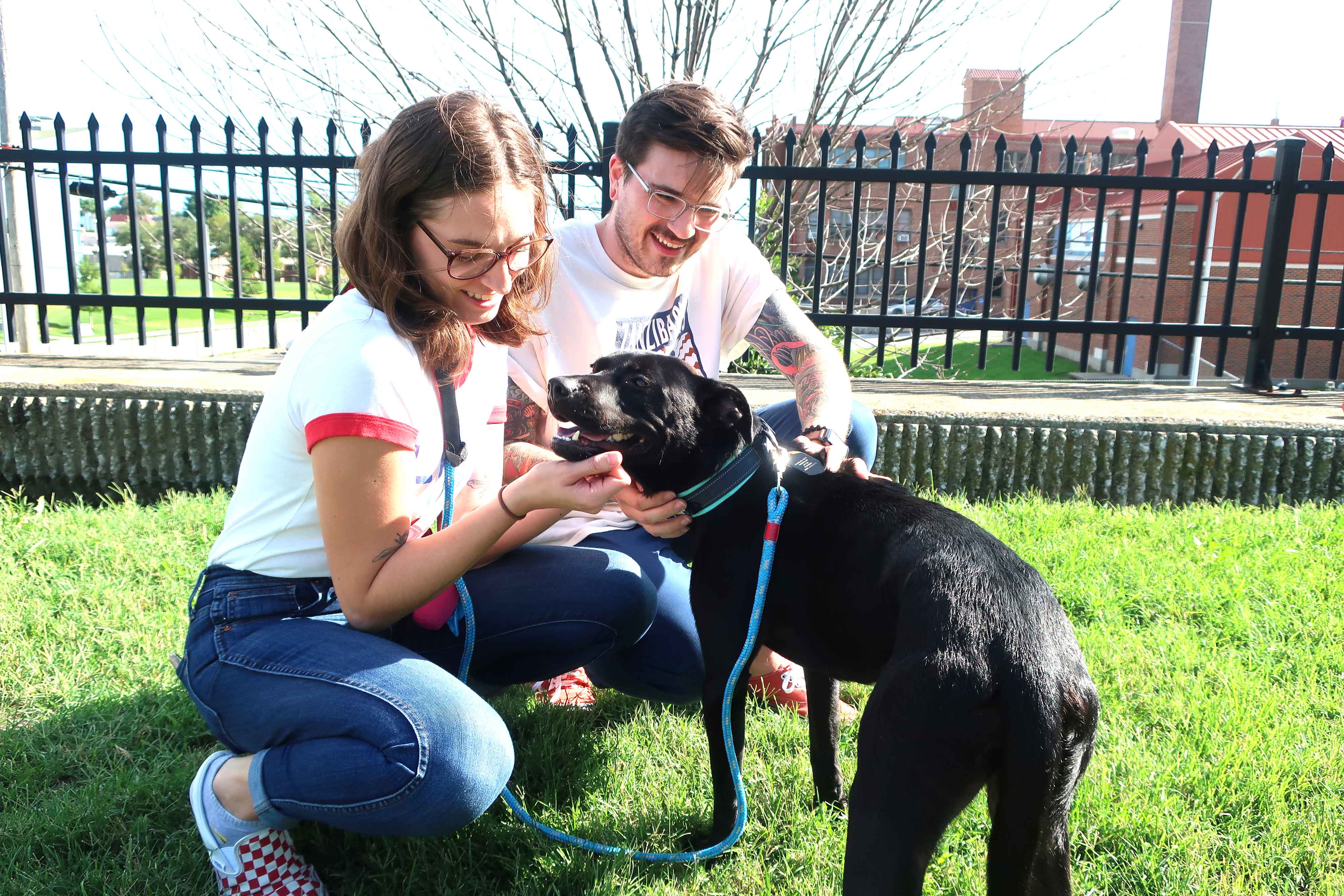
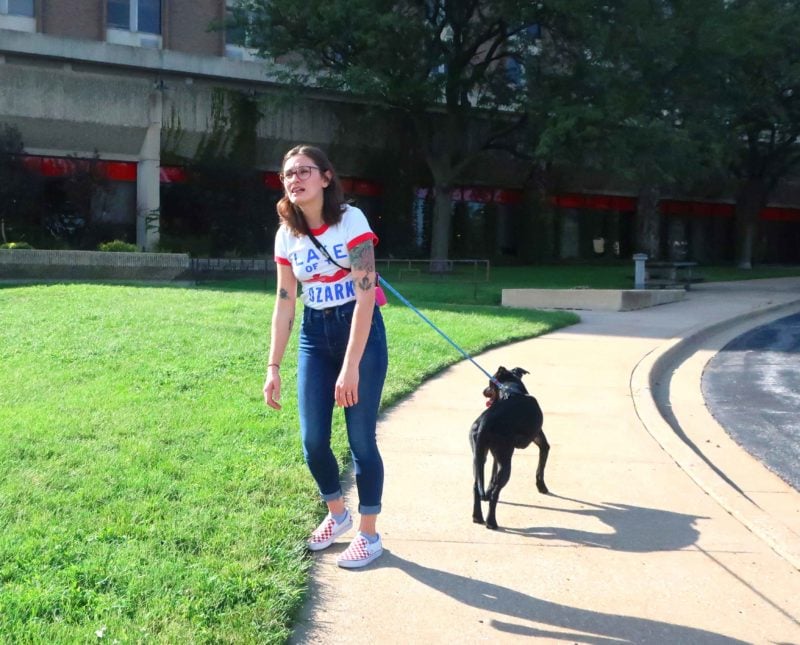
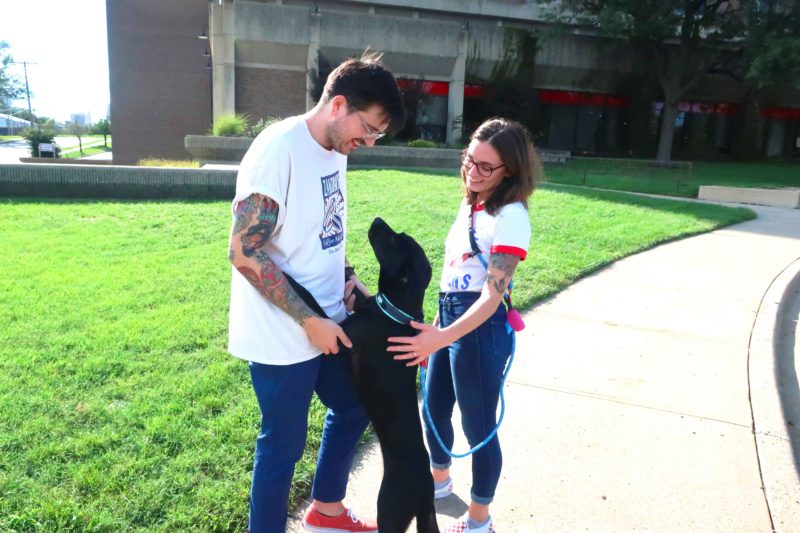
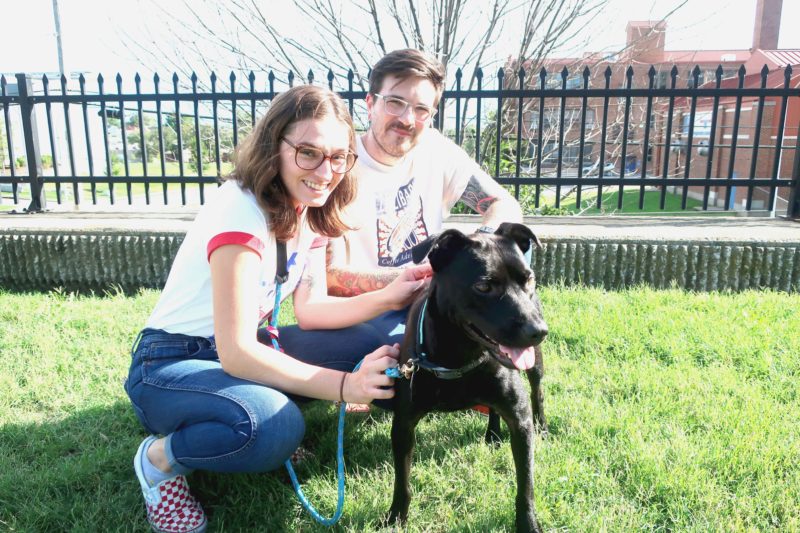

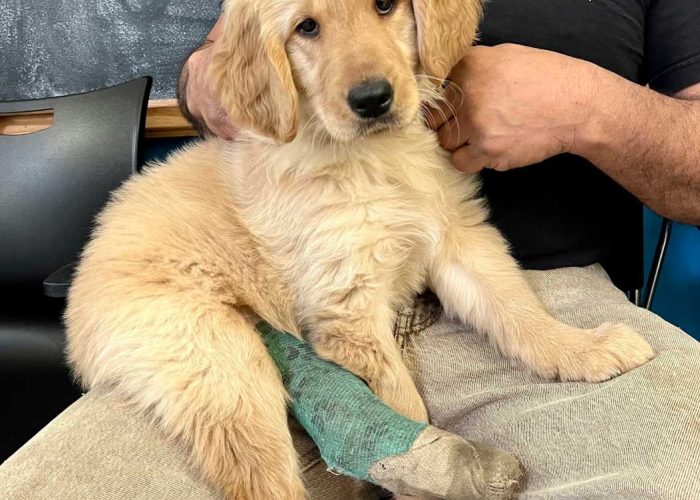
Wonderful article, Dave!
Thank you, Lisa!